JAMSHEDPUR, India
Here in the blast furnace, near the confluence of two rivers, the coal and iron ore never stop cooking.
Even through the oppressive humidity and downpours of monsoon season, even on India’s Independence Day, the metallic lava flows in a ceaseless stream through a network of tubes. It eventually will be molded into shapes, cooled, rolled into coils or bundled and loaded onto trains or trucks — destined for use in wires, beams, auto parts, pipelines.
Jamshedpur, India
With seven blast furnaces, Tata Steel’s Jamshedpur Works — a massive plant carved into the jungles of northeastern India — churns out 10 million tons of steel each year and directly employs some 35,000 workers.
The tenth-largest steel producer in the world plans to add more capacity in coming years, meaning the surrounding city of of 800,000 people — established more than a century ago in consultation with Pittsburgh steelworkers — will see wider roads, more bungalows, more saplings planted in the parks, a new shopping mall complex.
Jamshedpur, India’s Steel City and among the most enduring company-administered towns in the world, is a testament to both the country’s industrial prowess and its energy challenges. While the plant helps build infrastructure to support the country’s sprawling megacities and usher in middle-class amenities for India’s population approaching 1.3 billion, it also intensely consumes natural resources.
Jamshedpur’s growth has been built in part on a resource that makes Tata Steel’s metal the cheapest to produce in the world: Arriving by rail, coal and other raw materials are sourced from Tata Steel’s own mines and collieries, which lie 100 miles to the north. It also sends much of its steel to a plant just miles away operated by its sister company, Tata Motors. The largest automaker in India, Tata Motors has sold more than 9 million vehicles.
Both on and off the plant floor, this city — triangulated by the converging Subarnarekha and Kharkai rivers — shows what Pittsburgh might look like today if the U.S. steel industry had never collapsed. Closely intertwined with India’s accelerating prosperity, it’s emblematic of the challenges the country faces in undertaking global environmental goals.
Finding purpose in Pittsburgh
A Tata Steel worker checks the temperature of the one of the plant's seven blast furnaces.
Finding purpose in Pittsburgh
Jamsetji Tata, an industrial tycoon who in the late 19th century founded a world-class hotel and textile mills, spent much of his later years convincing anyone who would listen — the Indian and British governments, academics, governors — that rich mineral deposits of iron ore and coal existed beneath the rolling green hills of northeastern India.
The deposits, which seemed to be on par with those in other countries that at the time were exploiting their resources and building their industrial economies, were there for the taking. All he needed was some technical help in selecting and developing a site that could thrust India into modernity.
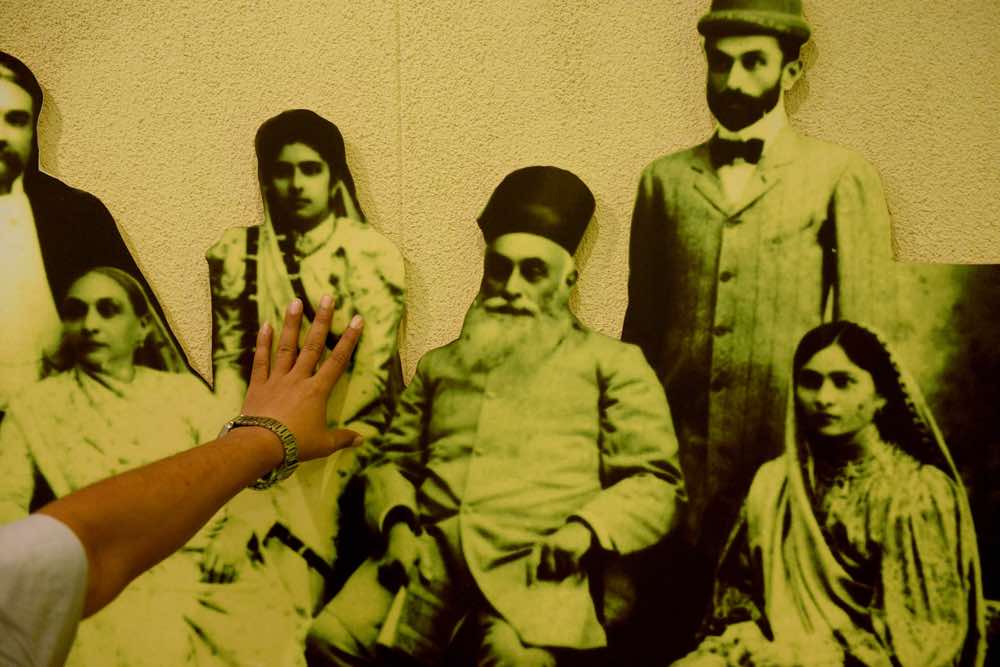
Swarup Sengupta, an archivist at the Center for Excellence, which showcases Tata Steel company’s history, points to a photograph of the family of Founder Jamsetji Tata (center, seated), founder of Tata Steel.
In 1902, he took a whirlwind trip to the United States, where he studied the coking process in Birmingham, Ala. Near the end of the trip, Tata went to Pittsburgh, where the steel industry was churning out half of all U.S. output and company towns were springing up along the southwestern Pennsylvania region’s rivers to accommodate the industry's workers.
“It was at Pittsburg(h) in Pennsylvania ... that Mr. Tata at last attained his purpose, and found precisely the advice and help he sought,” author Frank Harris wrote in a 1925 biography of the founder, later updated and distributed by Tata Steel today.
Julian Kennedy, an engineer and consultant in Pittsburgh who had “encyclopedic” knowledge of steelmaking, drafted the original plan for a settlement on 3,564 acres of thickly forested tribal land in India. Though Tata passed away in the intervening years, his son, Dorabji Tata, oversaw construction of Kennedy’s blueprint for the town beginning in 1908.
The original plan was not complicated. Kennedy drew up a gridiron layout — with alphabetically named roads running east to west and numbered avenues running north to south — to accommodate as many as 10,000 residents, skilled laborers and managers.
But experts see it as an unusual formative experiment of urbanism, right around the time cities like New Delhi were being founded and constructed as political and social centers.
“It is considered to be a remarkable success story in the face of the decline of company towns elsewhere in the world,” wrote Amita Sinha, a landscape architecture professor at the University of Illinois who grew up in Jamshedpur, in a 2011 study.
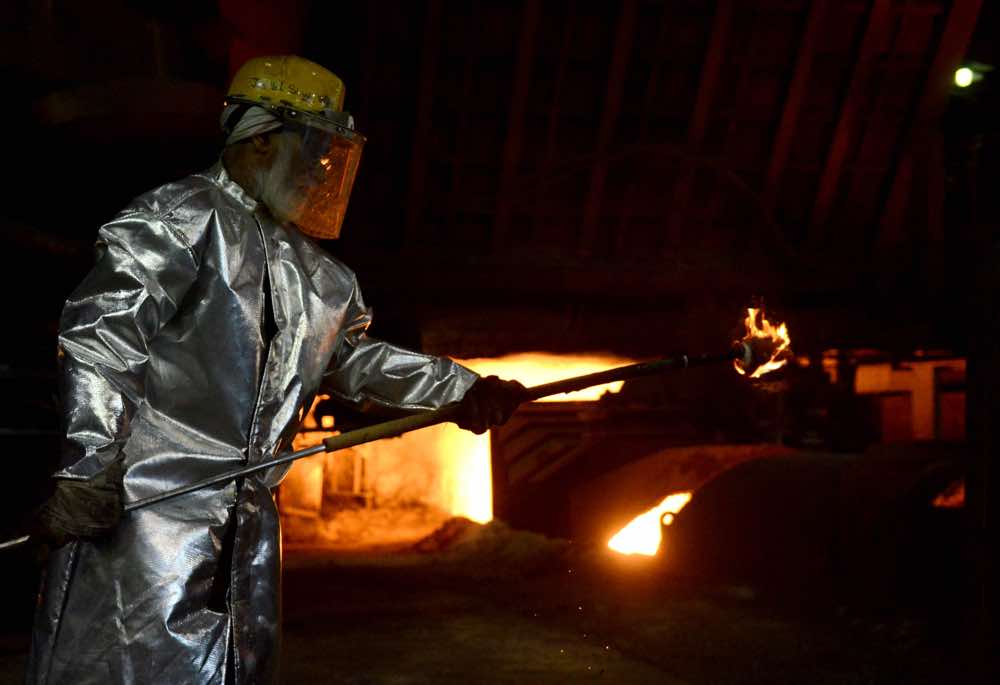
A Tata Steel worker checks the temperature of the one of the plant's seven blast furnaces.
The town was “not a colonial capital, a hill station, or an expanded cantonment or civil lines,” she wrote. “It was, for the Indian subcontinent, a new kind of settlement built around the steel factory that was the primary source of employment for its residents and governed all aspects of their lives.”
Jamshedpur’s history is also chronicled in the town’s Centre of Excellence, a palace-like museum that houses original documents and is a popular destination for Steel City visitors.
According to the museum, Jamsetji Tata described his vision in a letter to his son around the time he met Kennedy: “Be sure to lay wide streets planted with shady trees, every other of a quick growing variety. Be sure that there is plenty of space for lawns and gardens. Reserve large areas for football, hockey and parks. Earmark areas for Hindu temples, Mohammadan mosques and Christian churches.”
Tata Steel reaped early profits from sales of steel plates and rivets for the British military during World War I and again supported the war effort during World War II, said Swarup Sengupta, an archivist for the company.
The town ballooned much in the way that company towns in America grew around factories, mills and mines. Coal company towns in southwestern Pennsylvania numbered in the hundreds to support American steel plants. Industrialist Henry Clay Frick alone had at least 72 holdings throughout Fayette County.
Tata Steel added more blast furnaces and hired more workers. Major town planning schemes in 1920 and 1944 improved infrastructure.
Now, decades after Frick’s constellation of company towns in southwestern Pennsylvania collapsed with the industry and workers’ declining reliance on the companies that employed them, Jamshedpur has grown to a city that revolves around one thing: the steel mill at the center of the city.
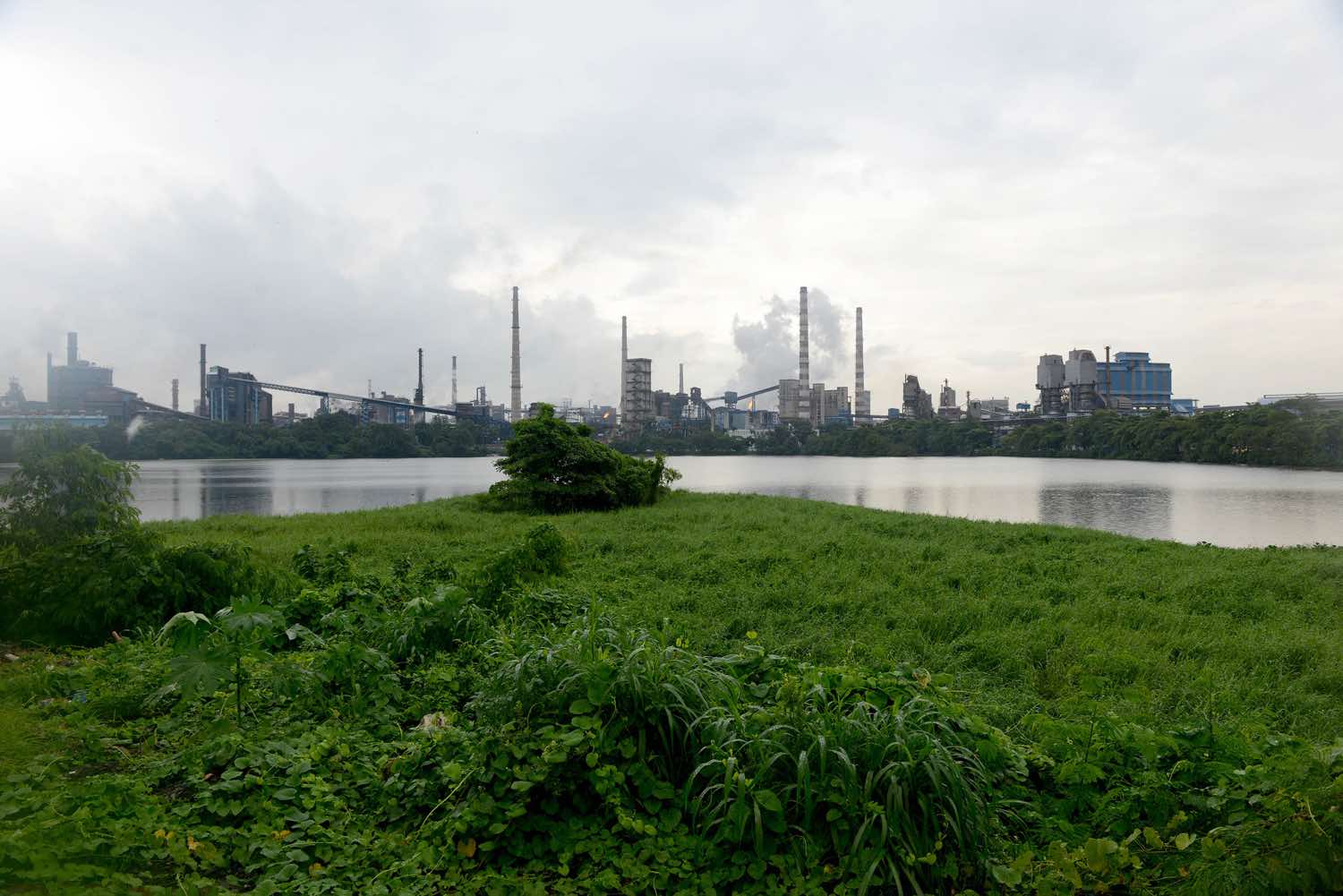
The Tata Steel plant has seven blast furnaces and produces about 10 million tons of steel annually. Tata Steel Group is the 10th largest steel producing company in the world, according to the World Steel Association.
A culture of prestige
A woman watches the traffic while crossing the street in Jamshedpur.
A culture of prestige
At least one person in Jamshedpur has experienced life and industry in both places.
About a mile away from the plant, Siddhartha Misra lives in a homey two-story bungalow in a gated residential development with his wife, and two sons — one 3 years old the other just two months. Each month, about $200 is deducted from his pay for rent.
An amicable 39-year-old, Mr. Misra grew up in Lucknow, a town in northern India. In 2000, he was drawn to the United States to study materials science at Carnegie Mellon University, a graduate program bursting with promising Indian engineers.
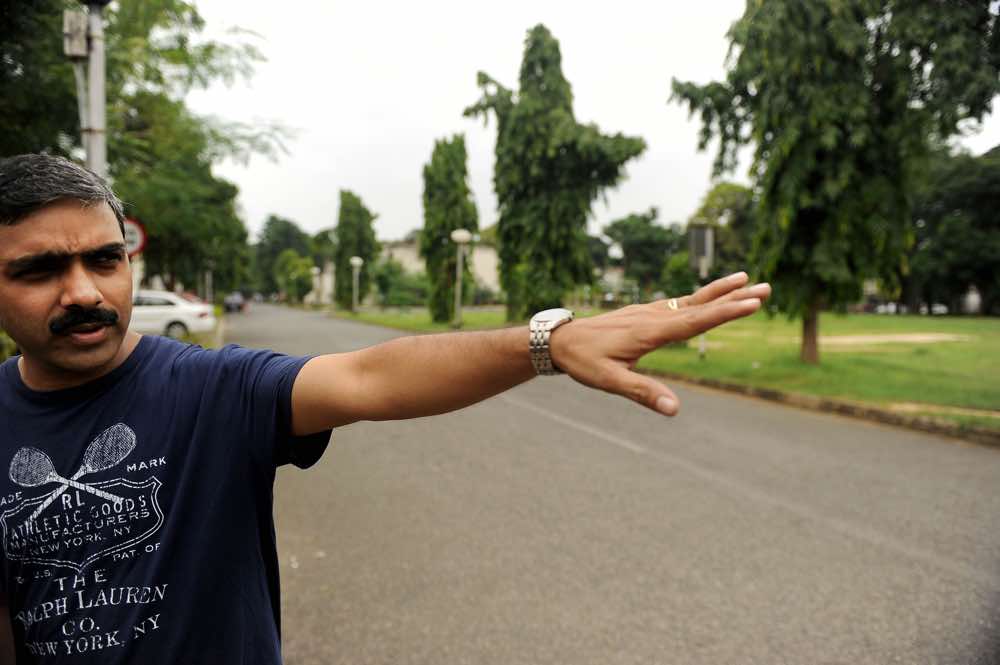
Siddhartha Misra, a manager at Tata Steel, lives in company-owned bungalow with his family. Misra, an Indian native, went to school at Carnegie Mellon University and worked at US Steel before returning to India. Here, he stands outside his home in his gated neighborhood.
After earning a masters and a doctorate from CMU, he joined U.S. Steel as a senior research associate, working in the the Pittsburgh steel company’s research and technology center — on part of the site once occupied by the Homestead Works and is now the site of the Waterfront shopping center.
In the steelmaking and casting group, he provided technical support to U.S. Steel’s five plants in the U.S. and two in Canada, optimizing production to save energy and improve steel quality.
While Mr. Misra helped with the company’s product development, he lived in Squirrel Hill, Shadyside and Forest Hills.
At a certain point, he felt a tug back home.
The U.S. steel industry, particularly after the recession in 2008, was in a downturn. His wife, Pooja Bajpai, who had joined him in Forest Hills, was having trouble securing a visa that would allow her to stay. He also felt a sense of civic responsibility.
“I had a duty to give back to my country,” he said. “I owed something in return, so I decided to work for an Indian steel company.”
Plus, steel’s fortunes in India were going in the other direction. “The Indian economy was picking up and the steel industry's future was promising here,” he said. “That kind of reinforced my intensions of coming back.”
As with any life-altering leap, there was still doubt and anxiety, he said. “To be honest, we weren’t sure what to expect.”
That Mr. Misra can now say he made a good decision helps explain Tata Steel’s hold on Jamshedpur. Today, while Tata Steel collects rent for homes and asserts an inherent authority over the region, it is also a paternalistic provider. Through a subsidiary called Jusco, or the Jamshedpur Utilities and Services Co., it widens roads and fixes any structural deficiencies with the homes.
The company does not own the police or fire departments, and the court and education systems remain independent of company influence.
Jubilee Park, a 200-acre expanse of green the company gifted the city decades ago, has a pristine lake, an amusement park, laser light shows and a towering canopy of trees.
On a Sunday afternoon in August, a couple posed for a selfie near the lake and visitors swarmed the Tata Steel Zoological Park, which offers glimpses of monkeys, lions, tigers, leopards and — for a boat ride to the middle of a lake — an attraction called Bat Island. It was not unlike the origins of Kennywood, the historic amusement park still operating in West Mifflin, once provided a place for picnics and entertainment for steelworking families on their day off.
Extra spending money in workers’ pockets creates thriving commercial districts. In Bistupur, a cluster of some of the busiest markets, the big shopping day is Sunday — when most workers have the day off. Storefronts showcase home appliances, flat-screen televisions and monsoon-themed sales bonanzas.
“We depend on Tata Steel only,” said a textile distributor, his shop a hive of browsing shoppers and workers climbing high shelves of colorful fabrics. “When officers have holiday, and they come to our shop.”
Life in Jamshedpur
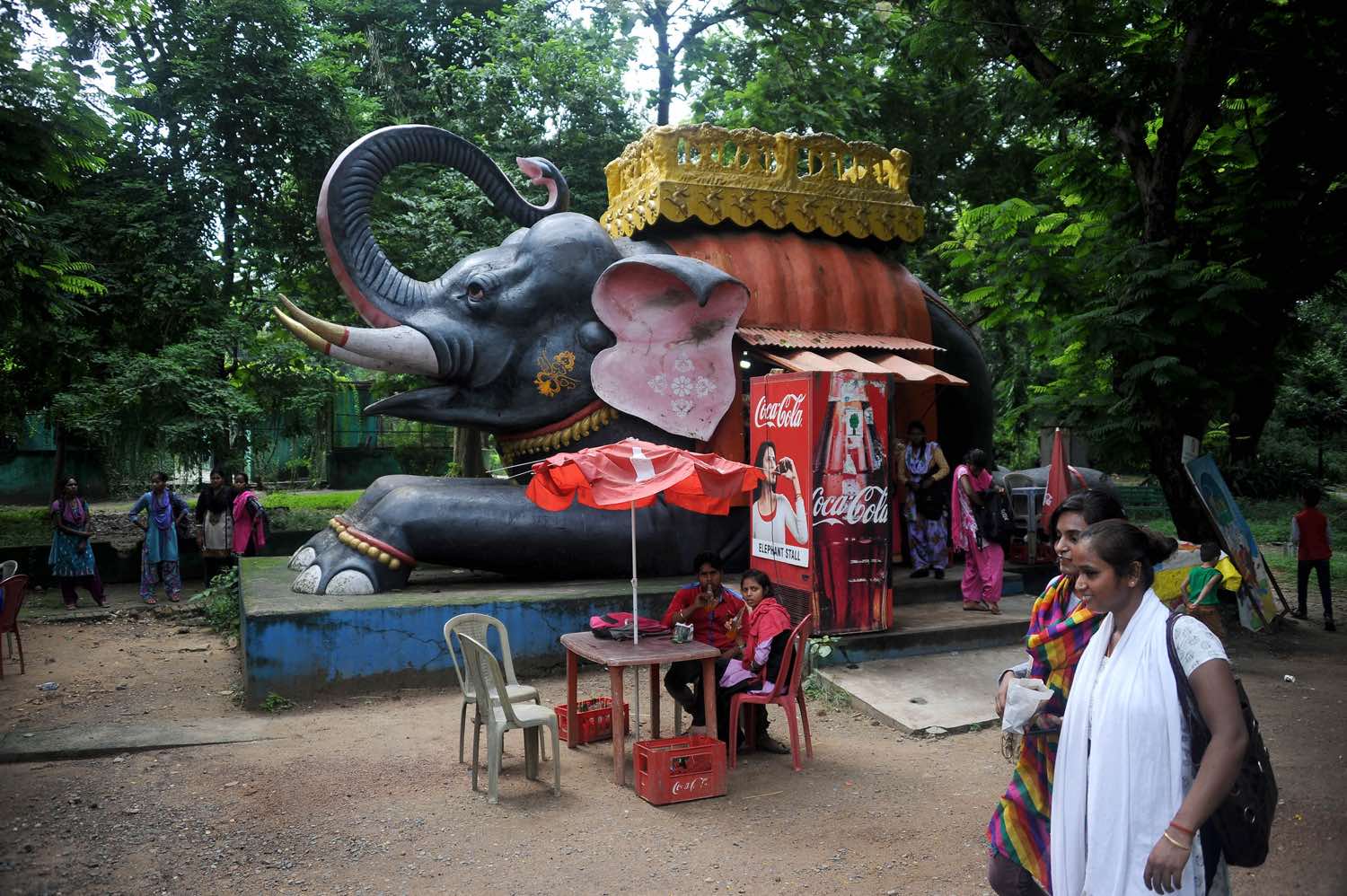
Patrons walk through the Tata Steel Zoological Park, the company-owned zoo in Jamshedpur.
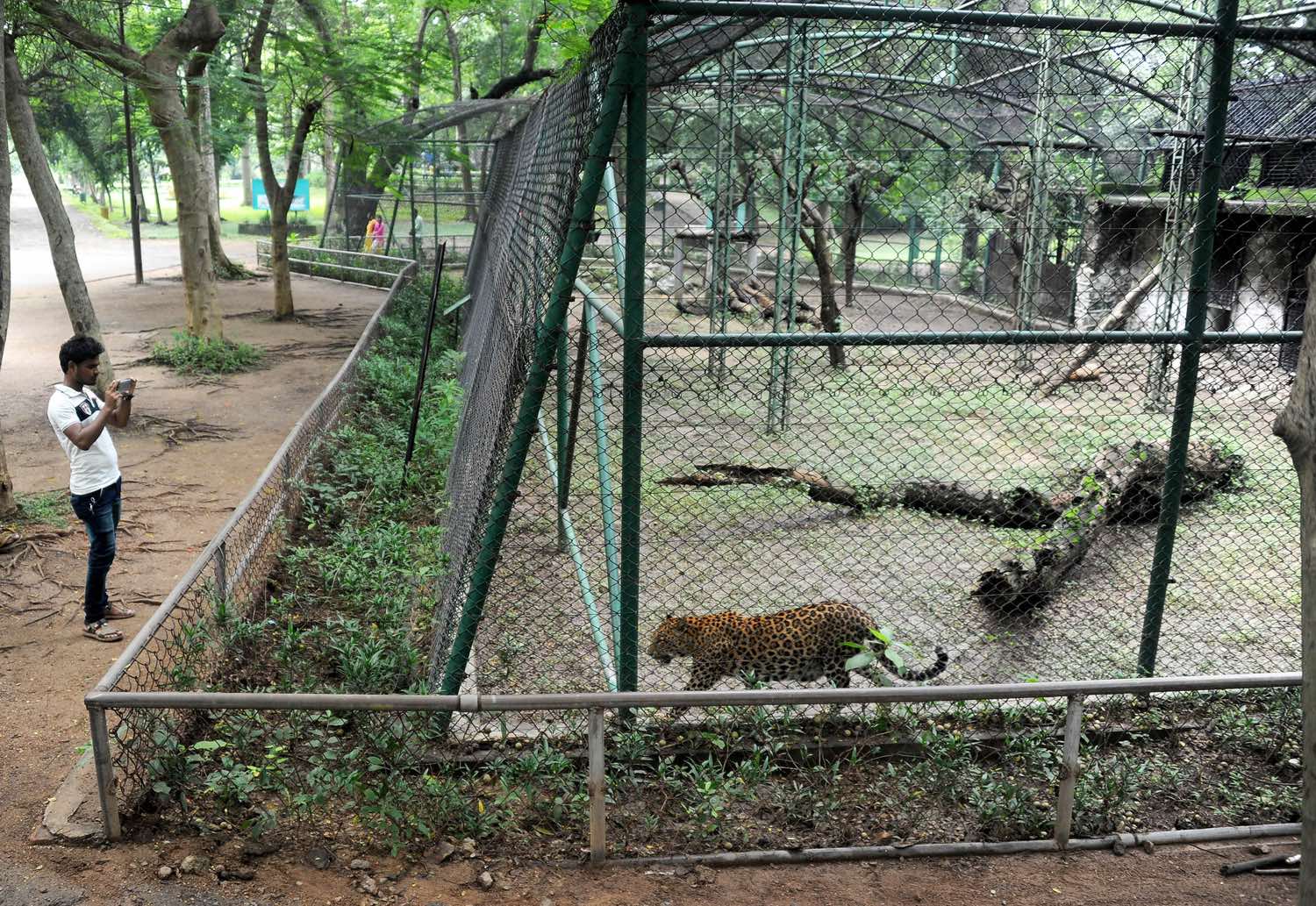
Patrons walk through the Tata Steel Zoological Park, the company-owned zoo in Jamshedpur.
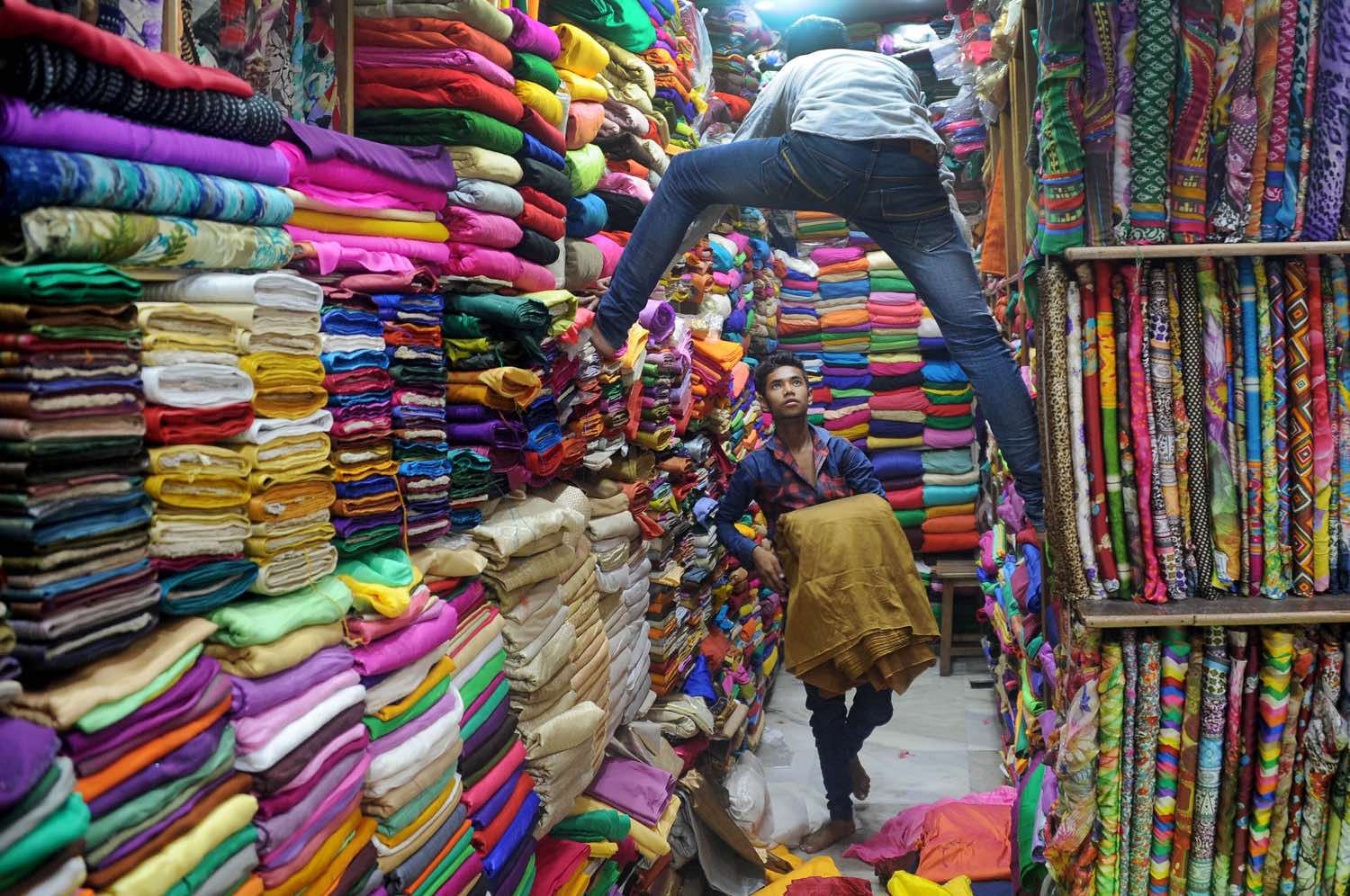
Fabric merchants climb their inventory for customers in the Bistupur Market outside the outter wall for Tata Steel in Jamshedpur.
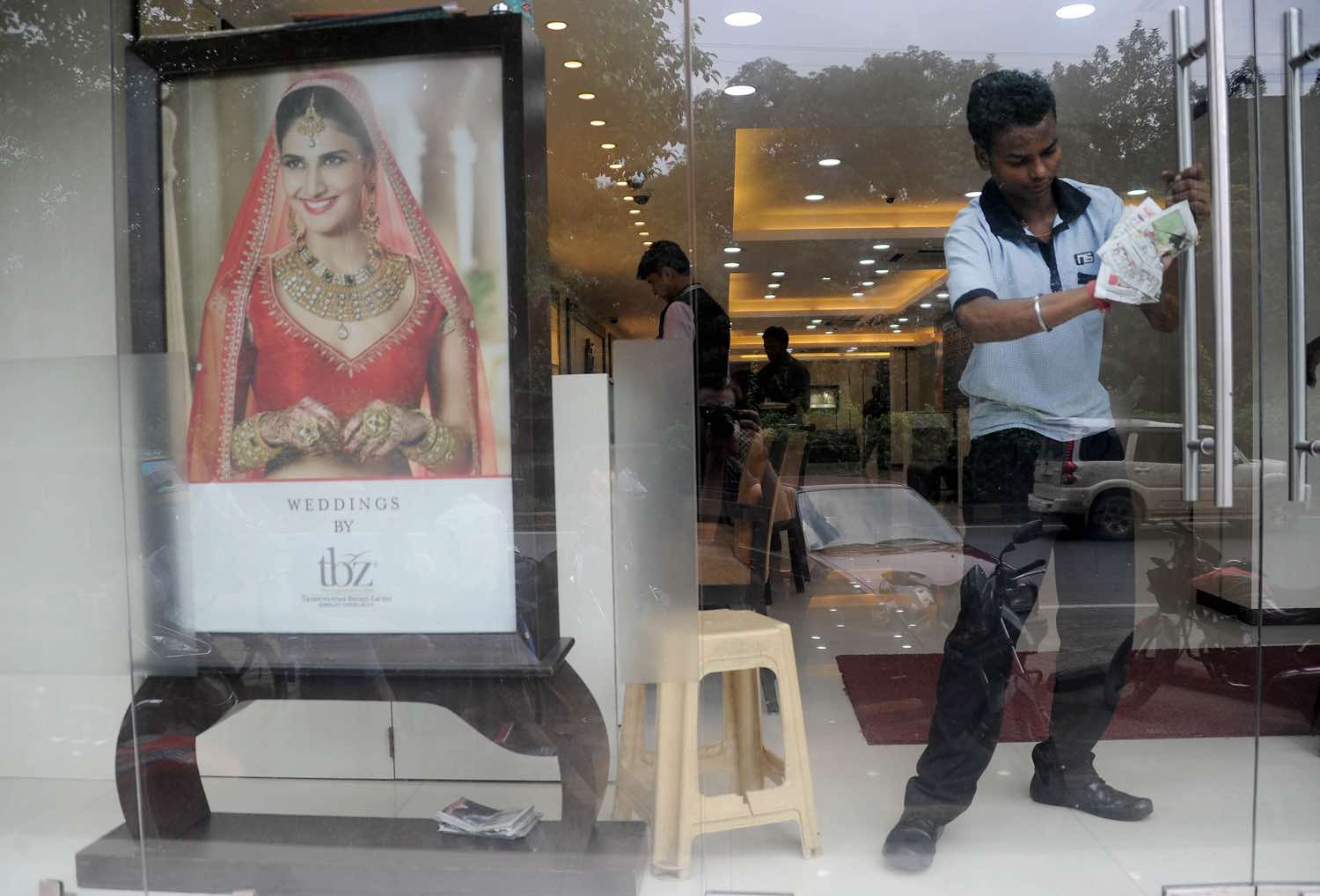
A shop worker cleans a window in Jamshedpur.
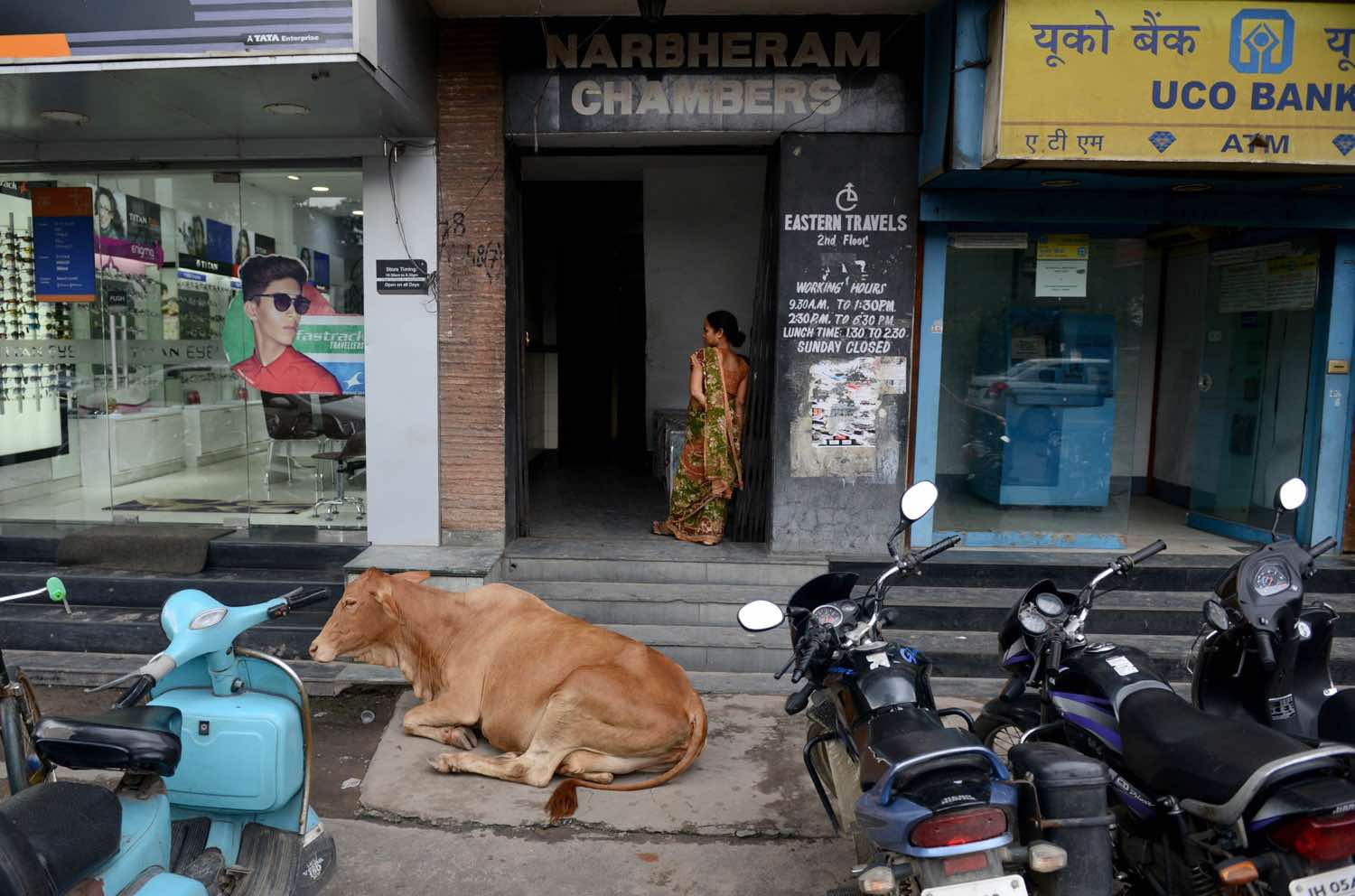
A cow rests next to a row of shops in Jamshedpur.
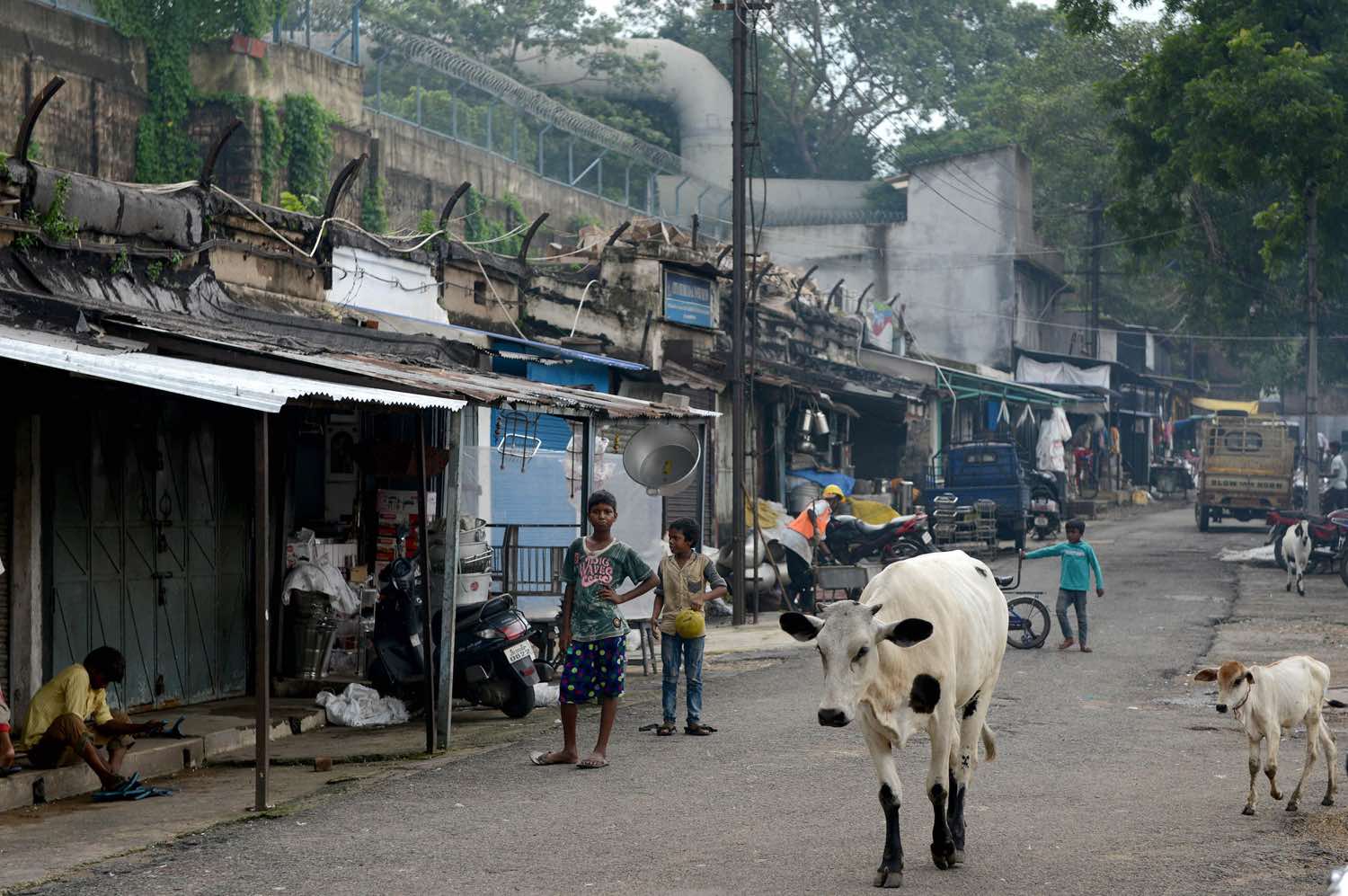
The Bistupur Market is located outside the outer wall for Tata Steel in Jamshedpur.
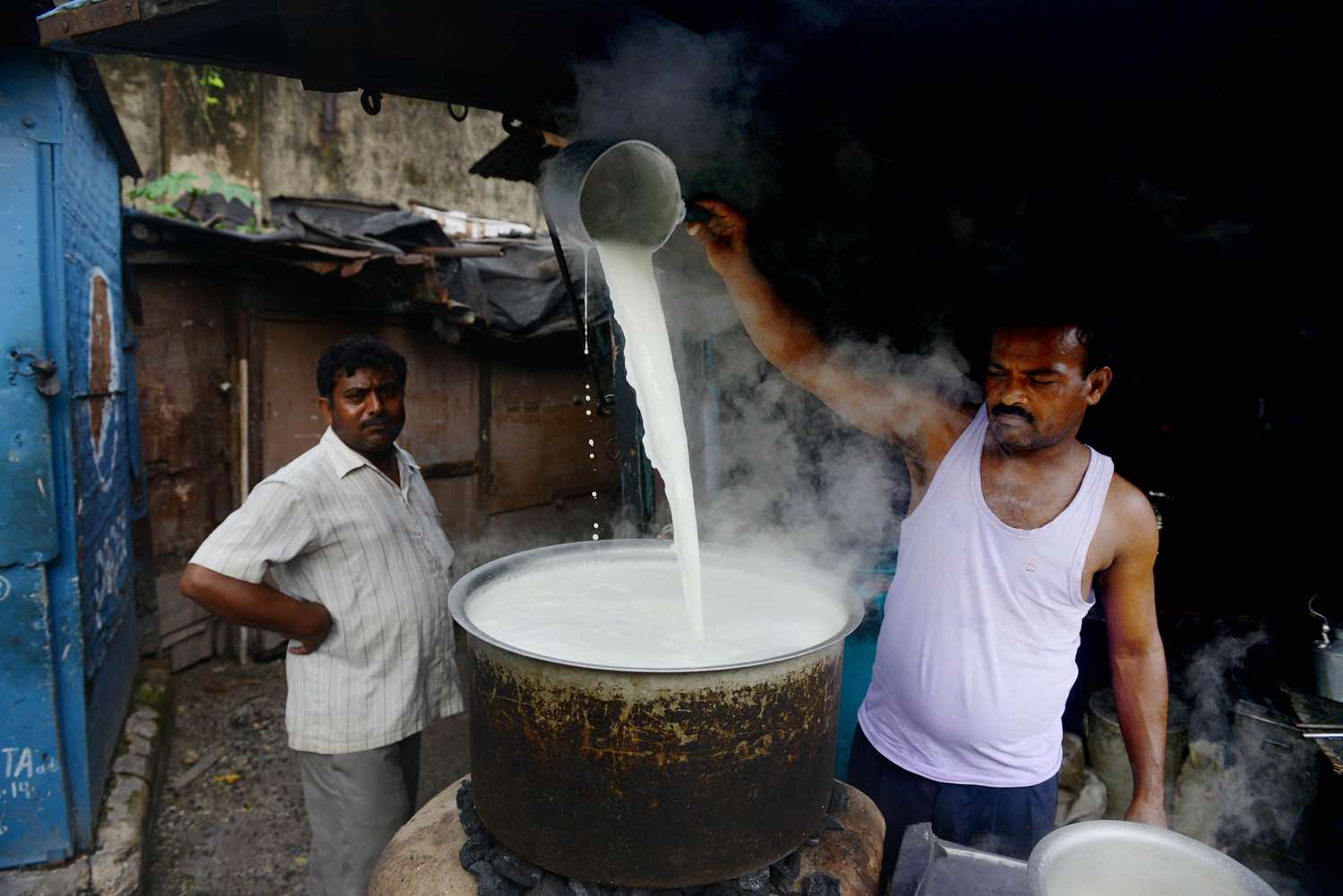
The Bistupur Market is located outside the outer wall for Tata Steel in Jamshedpur.
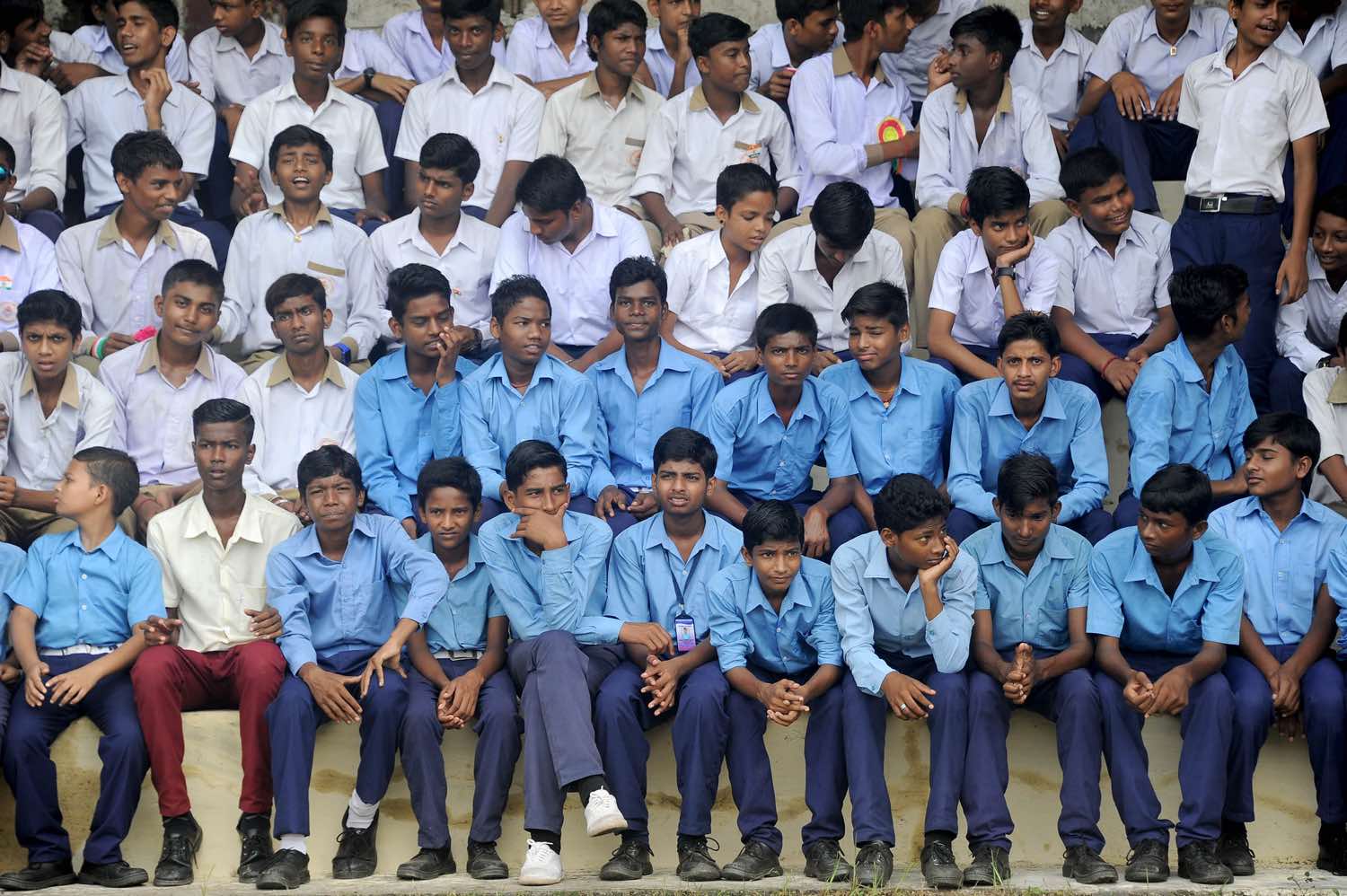
Students sit and watch Jamshedpur's Independence Day Celebration.
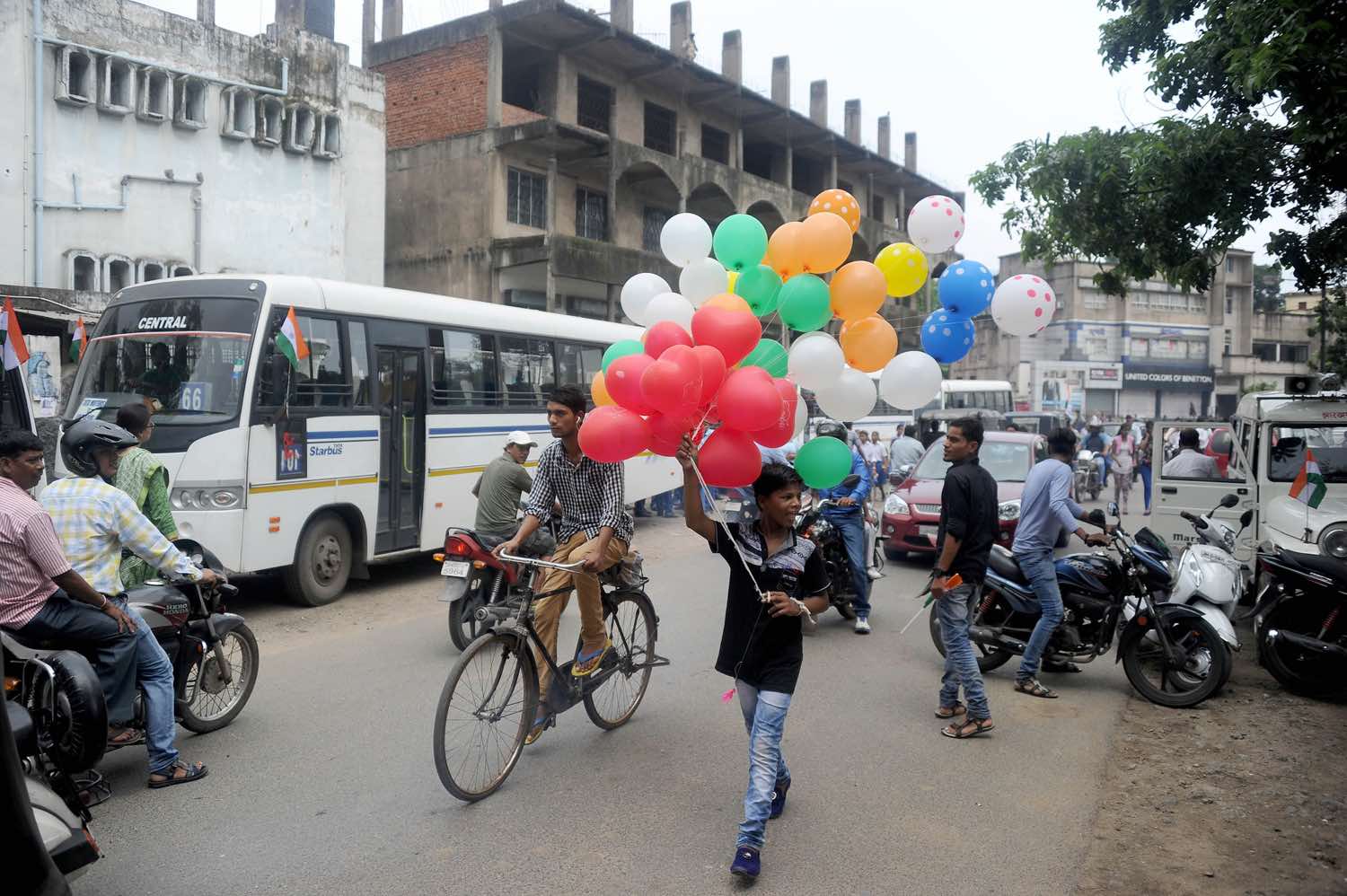
A boy carries balloons during Jamshedpur's Indian Independence Day celebration.
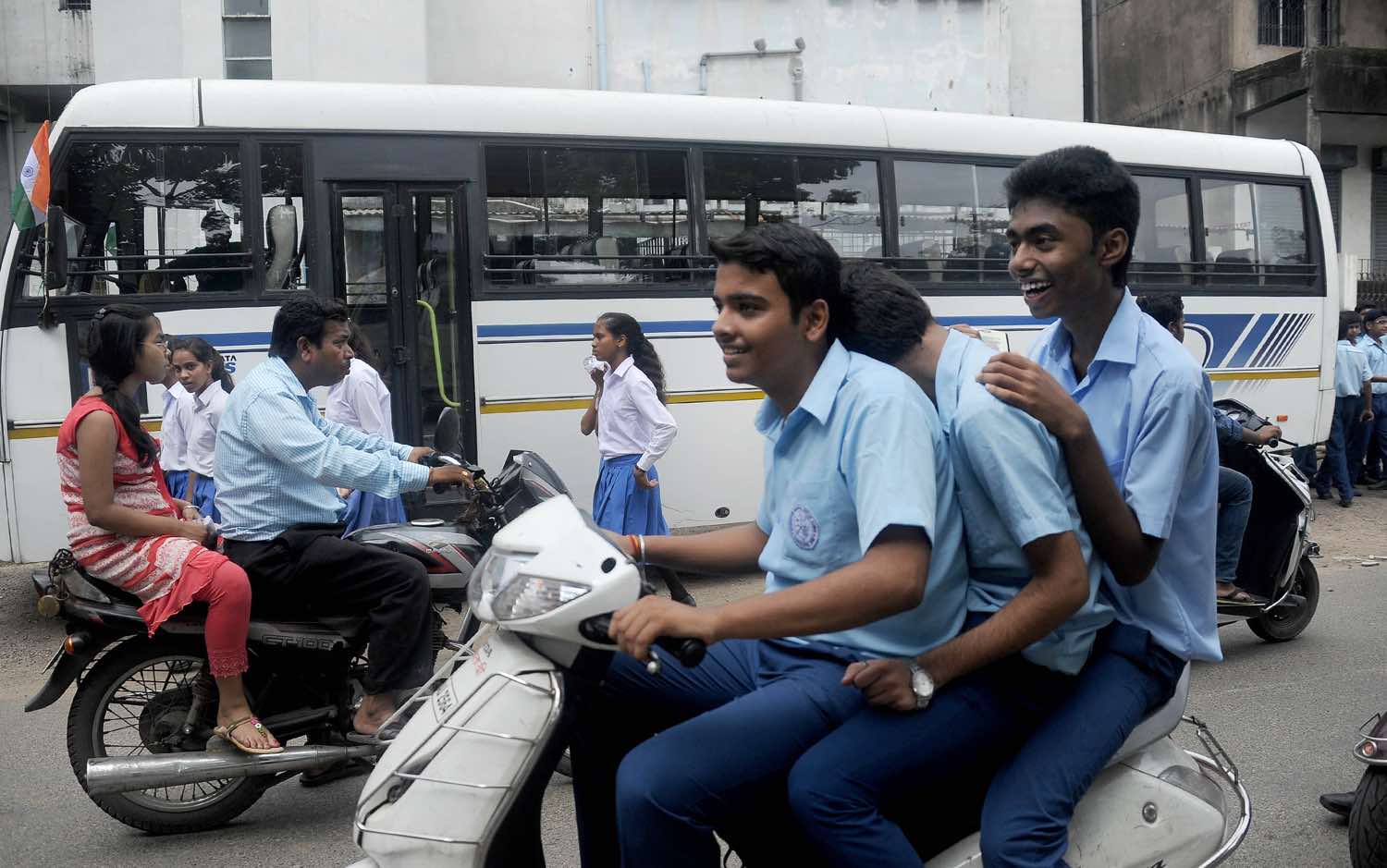
Independence Day celebrants ride scooters through Jamshedpur.
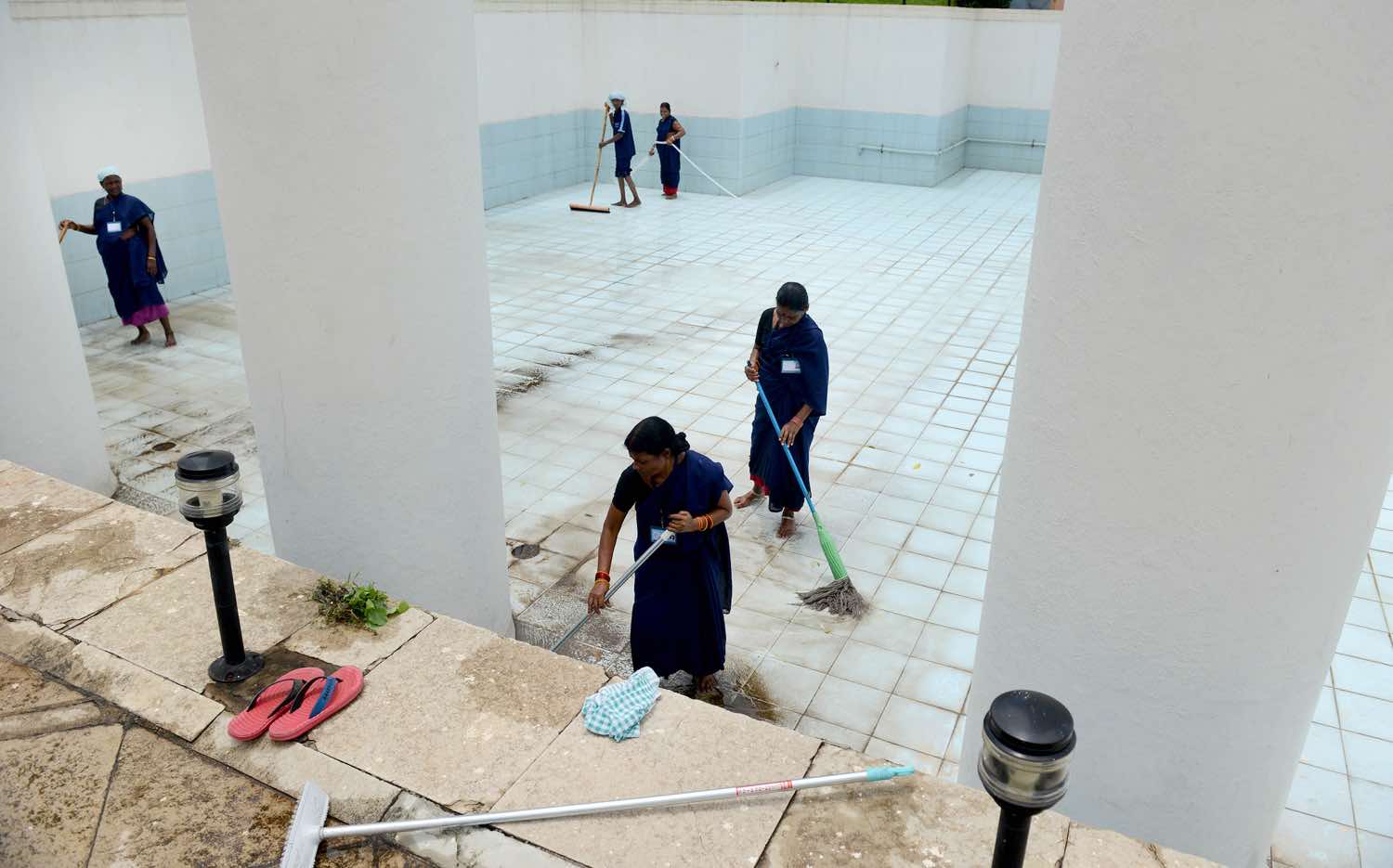
Workers clean the fountain area of the Center for Excellence, which houses Tata Steel's historical archives, in Jamshedpur, India.
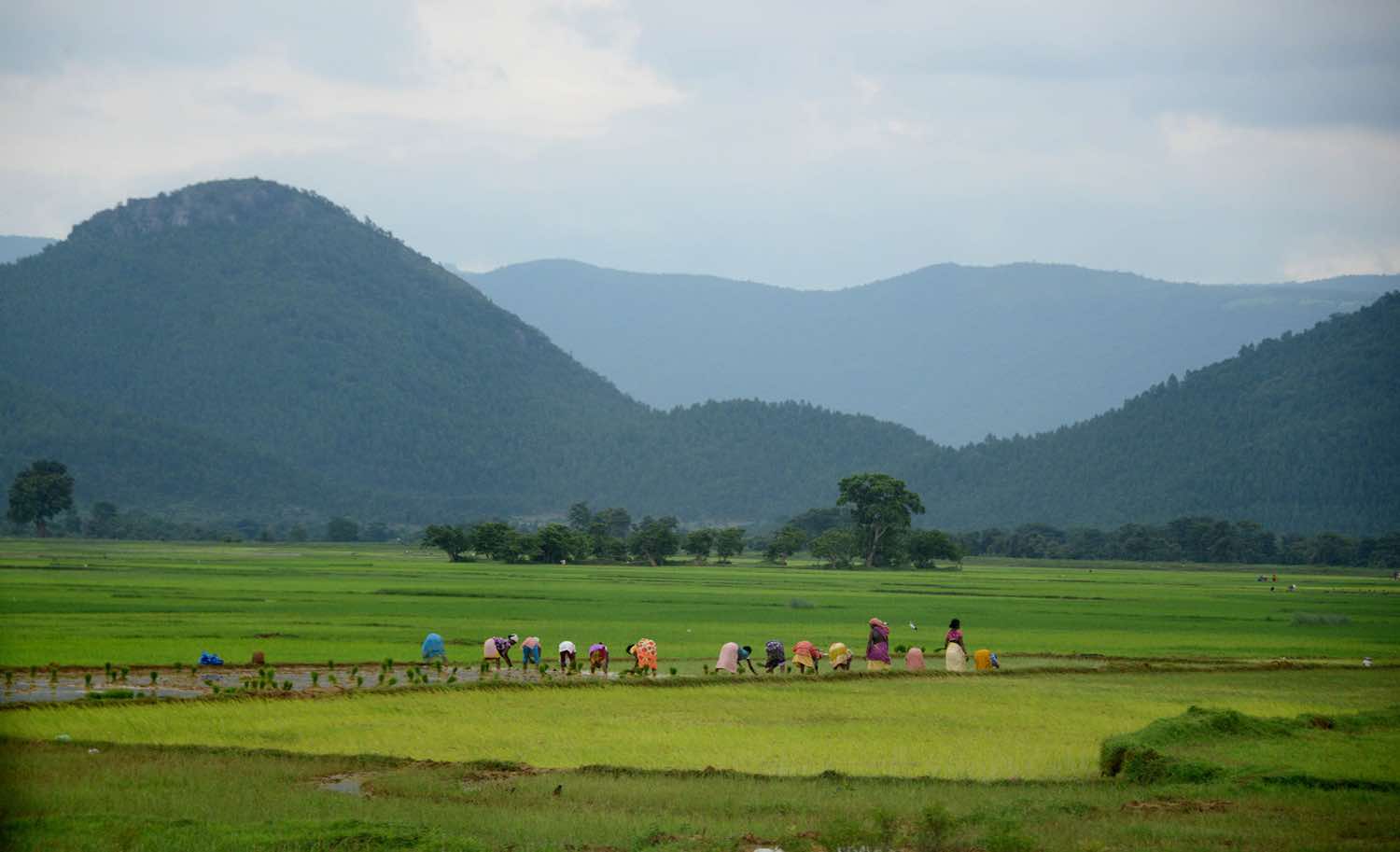
Rice farmers work along the route between Ranchi and Jamshedpur, the company steel town owned and run by Tata Steel.
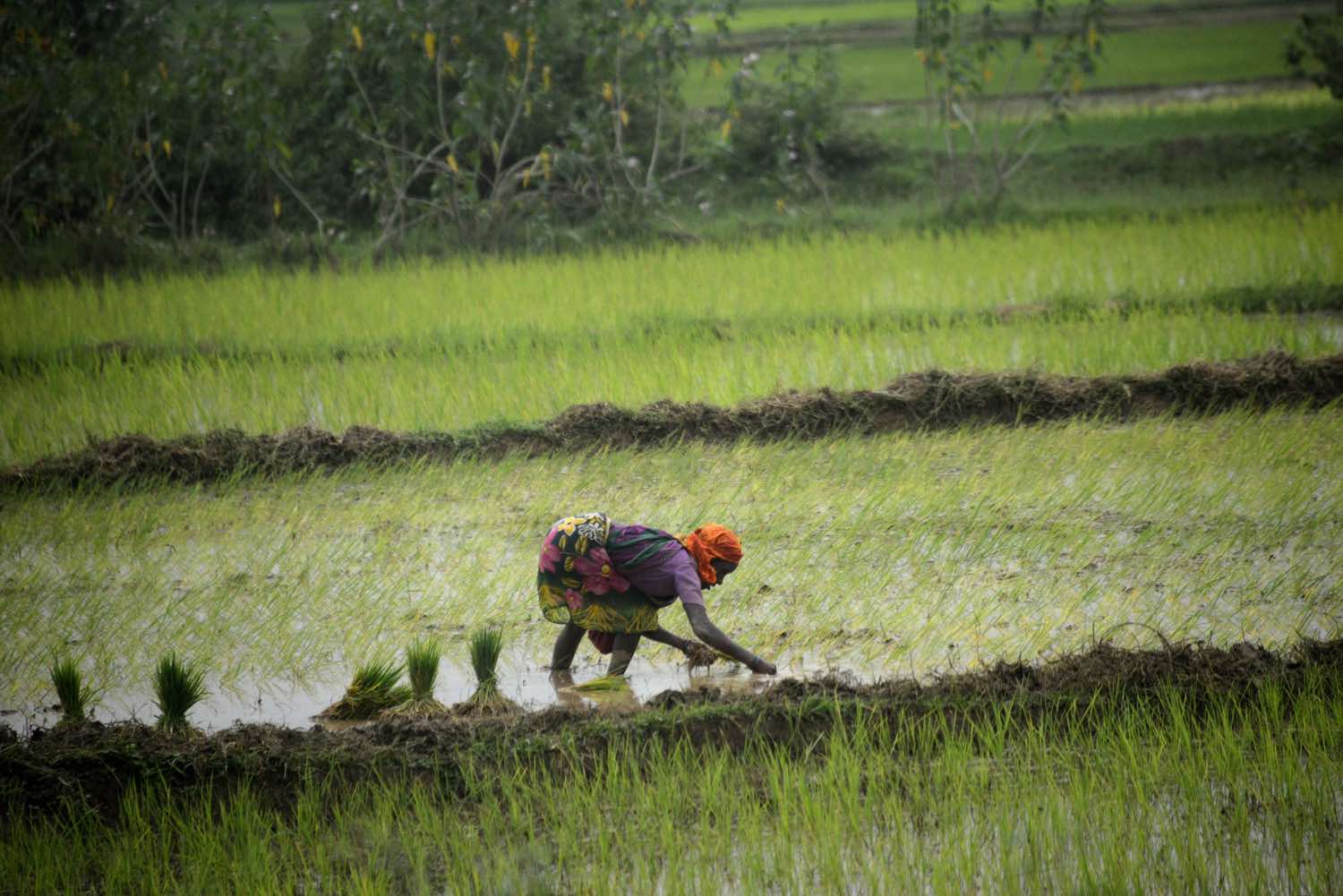
Rice farmers work along the route between Ranchi and Jamshedpur, the company steel town owned and run by Tata Steel.
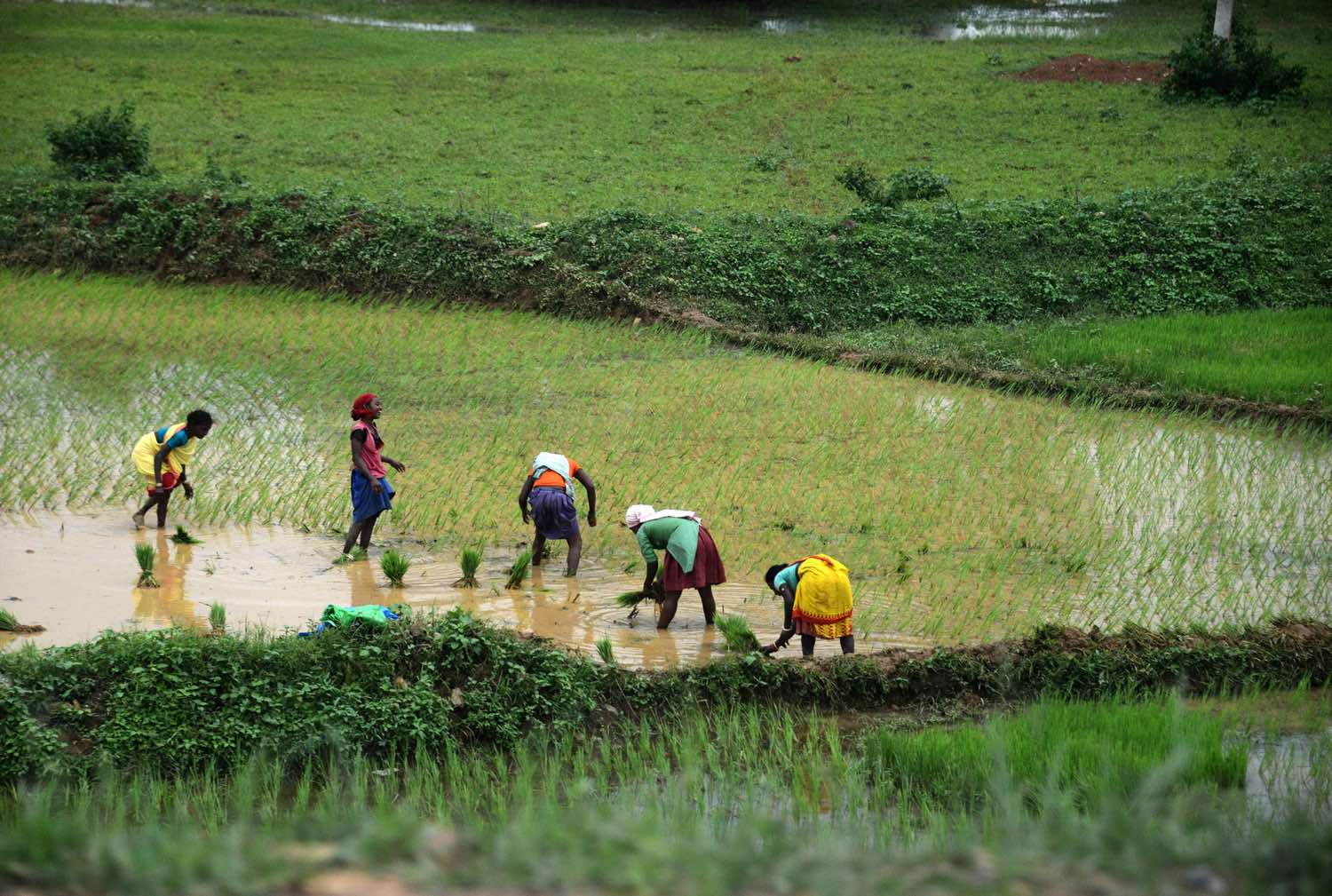
Rice farmers work along the route between Ranchi and Jamshedpur, the company steel town owned and run by Tata Steel.
Beyond the physical structure of the town, the company has meticulously built a culture of prestige. It sustains industries that support steel and encourages people to stay and start a family in the hopes that the next generation will work for the company, too.
The Indian government has made at least two attempts to install an municipal government independent of the company in Jamshedpur, but the city’s residents decisively rejected the referendum. Most recently in 2008, the Indian Supreme Court affirmed Tata’s control over the city.
“I grew up idolizing Tata,” said Shivendra Shrivastava, a Tata Steel employee and lifelong resident of Jamshedpur. “If people work for an ancillary industry, they all want their children to be employed with Tata.”
Decades ago, Mr. Shrivastava’s father moved to Jamshedpur from Kolkata to work at a business that made nuts and bolts to be used for manufacturing automobiles at Tata Motors. After studying mechanical engineering in school, Mr. Srivastava became one of the small groups of local graduates recruited annually by the company through rigorous testing and weeding out.
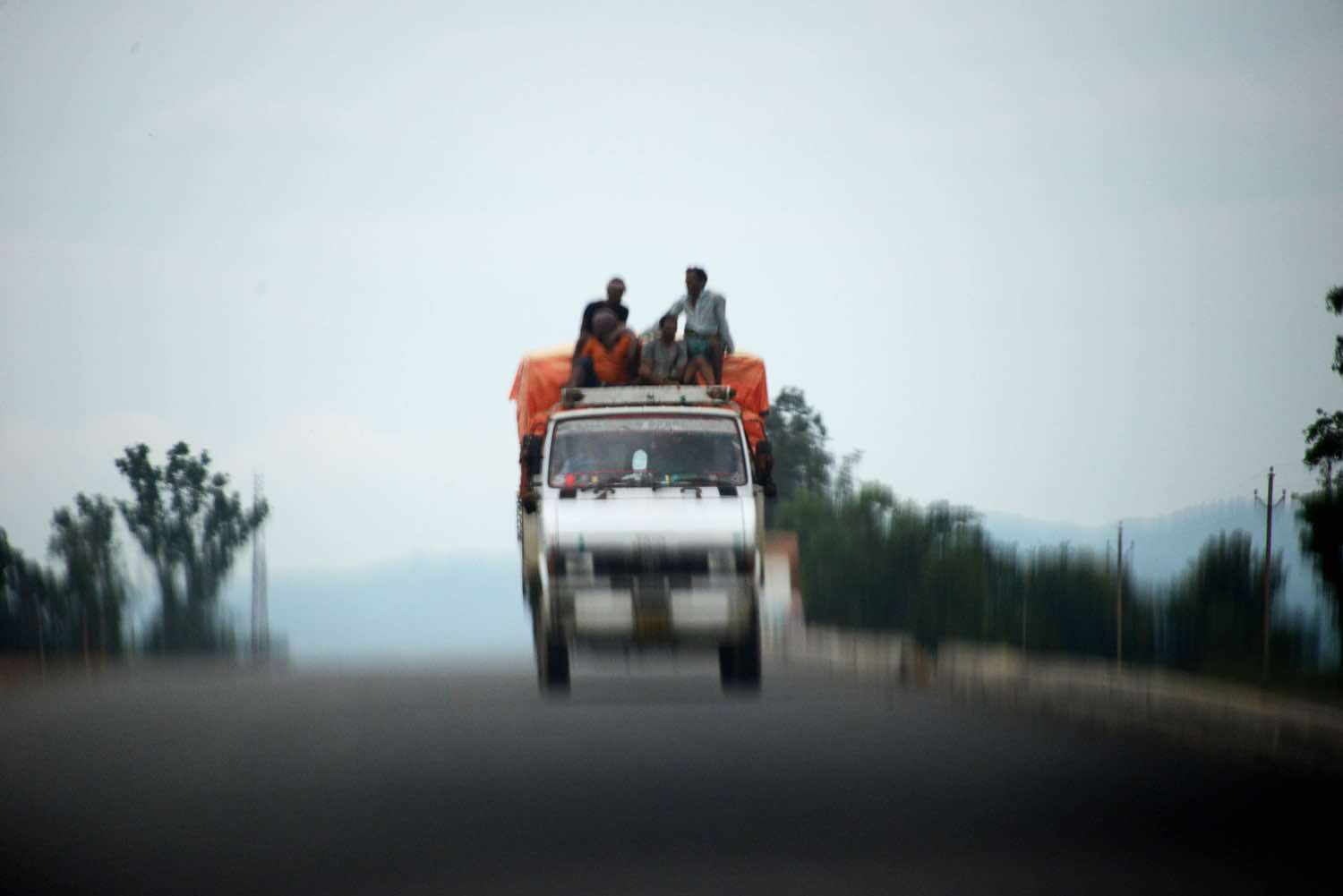
Tata Steel feeds steel it produces to Tata Motors, which has sold more than 9 million vehicles in India. Here, a Tata truck drives the road between Ranchi and Jamshedpur.
He now works in Tata Steel’s planning and procurement department, where he assesses where steel from Jamshedpur Works is needed most. He estimated that about 60 percent of the 10 million tons produced annually goes to the Tata Motors plant to feed India’s appetite for automobiles.
Domestic sales of passenger vehicles during September grew 24 percent from the previous September, the company reported, on strong demand for the Tata Tiago, a hatchback with a starting price of about $5,000.
“The demand for steel is huge, and it’s going to rise exponentially,” he said.
During a recent tour of the plant, company officials showed the Post-Gazette a typical day at the 1,700-acre plant. There was a certain familiarity to it all, despite its distance from the former Smoky City of Pittsburgh:
- Near the tremendous radiating heat of a blast furnace, a bearded worker in a fireproof suit manually checked the temperature of the smelting operation with a long pole — normally around 3,000 degrees Fahrenheit.
- A thread of glowing-hot metal being pressed into thin wire. A poster with a safety reminder depicted Homer Simpson getting shot in the eye by a burning ember from a campfire.
- Steel being purified, cooled and lowered by crane and set on blocks for shipping. Workers waiting for the company bus to take them home.
Indian Steelmaking
While the U.S. steel industry long since peaked -- and took an especially hard hit during the Great Recession -- India has steadily increased production as the country strives to build infrastructure that raises quality of life for its 1.2 billion people.
With more steelmaking comes a demand for metallurgical coal, which is used to make coke, an ingredient thrown into the steel blast furnaces with iron ore. India's met coal consumption has more than doubled since 2007.
Coal and poverty at the fringes
The Tata Steel plant has seven blast furnaces and produces about 10 million tons of steel annually. Tata Steel Group is the 10th largest steel producing company in the world, according to the World Steel Association.
Coal and poverty at the fringes
Jamshedpur, with all its gritty pride and comforts, represents the obstacle for environmental advocates who warn that developing countries like India could dash global hopes of slowing resource consumption and reducing air pollution.
And, here, the steel industry in India has yet another connection to the United States: Though Tata Steel owns the coal resources used at Jamshedpur Works, other Indian steel companies rely on coal hauled in from Appalachian coal producers.
Coal is used to make coke, which is a gray, porous material thrown into the blast furnaces with iron ore to make steel. Coal towns in southwestern Pennsylvania were prolific in digging coking coal in the early 20th century and developing early processes for baking the coal in beehive ovens.
U.S. coal exports to India have risen dramatically as the Indian steel production has grown 67 percent since 2007, surpassing the United States as the world’s third-largest steel producing country, according to the World Steel Association.
In that time frame, while U.S. steel mills have used less and less coal, India’s demand for coking coal has doubled, Bloomberg Intelligence data show. Cecil-based Consol Energy’s coal business sent about 1.8 million tons of coal to India, mostly to steel mills, in the first half of 2016, the company told analysts in July.
Outside the plant’s operation, Jamshedpur is not immune to poverty at the fringes. Jamshedpur struggles to keep infrastructure on pace with population growth. In the next decade, the population could hit 3 million, requiring new housing and better roads, according to a report from consulting firms cited in Ms. Sinha’s study.
“Much of this growth has been unplanned, resulting in an uncontrolled urban-rural fringe with its attendant problems of congestion, lack of public sanitation and poor housing stock,” the report read. Earlier this year, the Indian government ranked Jamshedpur 66th out of 75 cities on cleanliness. At the very bottom is Dhanbad, where Tata Steel leases 5,500 acres of coal reserves.
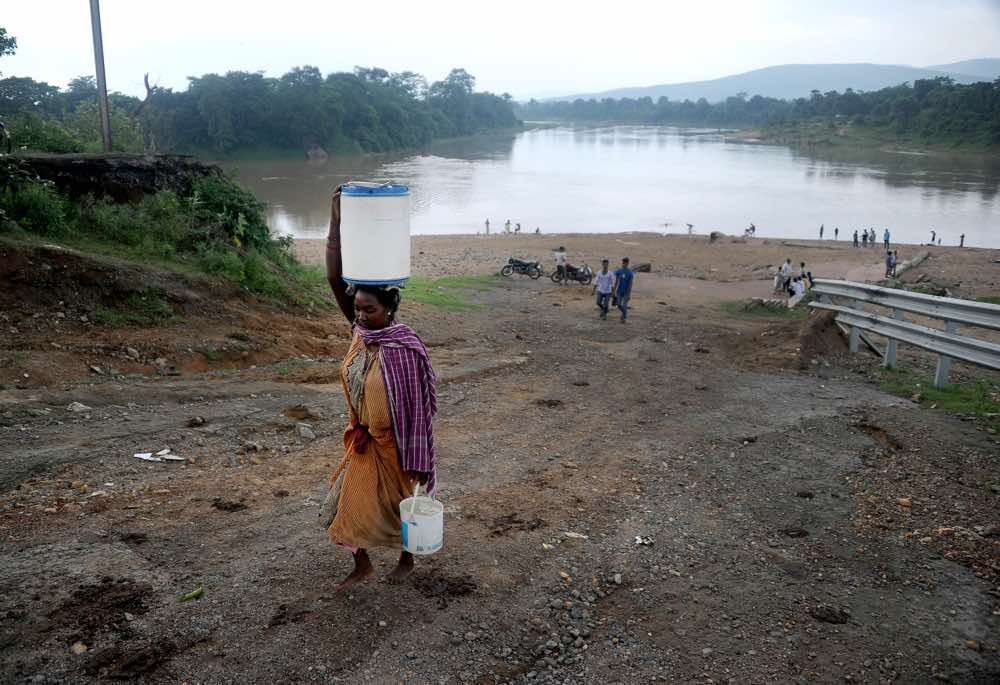
Jamshedpur is located along the convergence of two rivers, the Subarnarekha and Kharkai. Locals use the rivers for water, to fish, to bathe and to swim.
Miles away from the plant, a village of shacks sits not far from a landfill and the construction site of a future shopping mall. On a small dirt beach unceremoniously marking the confluence of the two rivers, bathers lather themselves with soap and immerse themselves in the water.
A demand for better infrastructure also provides a boost to the plant. Beyond the steel itself, a waste product from the steelmaking process, slag, is used by cement manufacturers during road construction, which is sorely needed in the region.
Those cement manufacturers can be seen along the crumbling road leading to Jamshedpur from Ranchi, the state capital. For a four-hour ride — which winds through rice fields stretching to the base of verdant sloping mountains — a taxi cab slowly navigates over potholes and around the occasional auto accident.
For its part, Tata Steel has promoted the idea that India can grow cleanly.
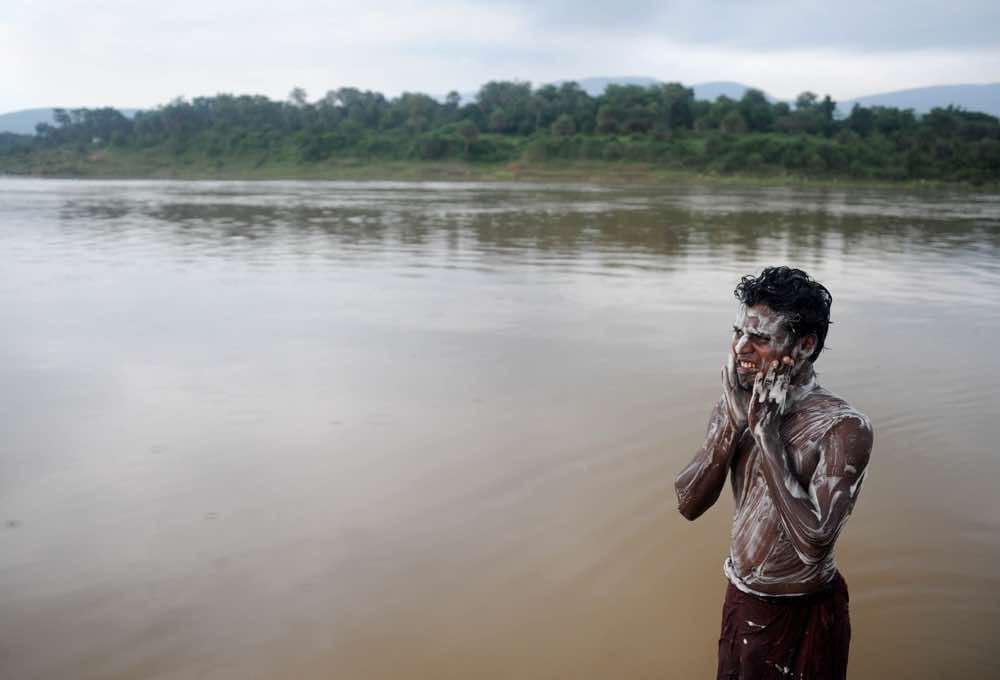
Jamshedpur is located along the convergence of two rivers, the Subarnarekha and Kharkai. Locals use the rivers for water, to fish, to bathe and to swim.
“The company complies with all environment related norms and has continuously evolved the technology to stay compliant,” said Amresh Sinha, a corporate spokesman for Tata Steel, in an emailed statement.
Mr. Sinha pointed to recognitions the company received recently — the Golden Peacock Environment Management Award and the Environment Excellence Award — for cutting down on its carbon emissions, energy consumption and dust emissions from smokestacks.
Within the colossal conglomerate that Tata has become, Tata Steel’s sister company, Tata Power, has embraced solar energy. Headquartered in Bengaluru, Tata Power’s solar business manufactures solar cells and modules and has installed both rooftop systems and larger commercial projects, according to its website.
In August, the company commissioned the building of India’s largest solar power plant yet: a 500-acre, 100-megawatt plant that is expected to offset 110,000 tons of carbon dioxide in the first year of operation. “We hope to continue to build on our capabilities,” said Ashish Khanna, CEO for Tata Power Solar.
A peaceful life
Siddhartha Misra, a manager at Tata Steel, lives in company-owned bungalow with his family. Misra, an Indian native, went to school at Carnegie Mellon University and worked at US Steel before returning to India. Here, he holds his son, Devagya, in his home's garden.
A peaceful life
For Mr. Misra, life in Jamshedpur is peaceful. His neighborhood, called the Dindli Enclave, affords him a spacious living room with wicker furniture, a vibrant backyard garden, a driveway and garage, a wide street with sidewalks that his 3-year-old son, Devagya, sprints down.
Along with a security guard out front, there is a metal-frame cow catcher to divert the freely roaming livestock that wander around the city.
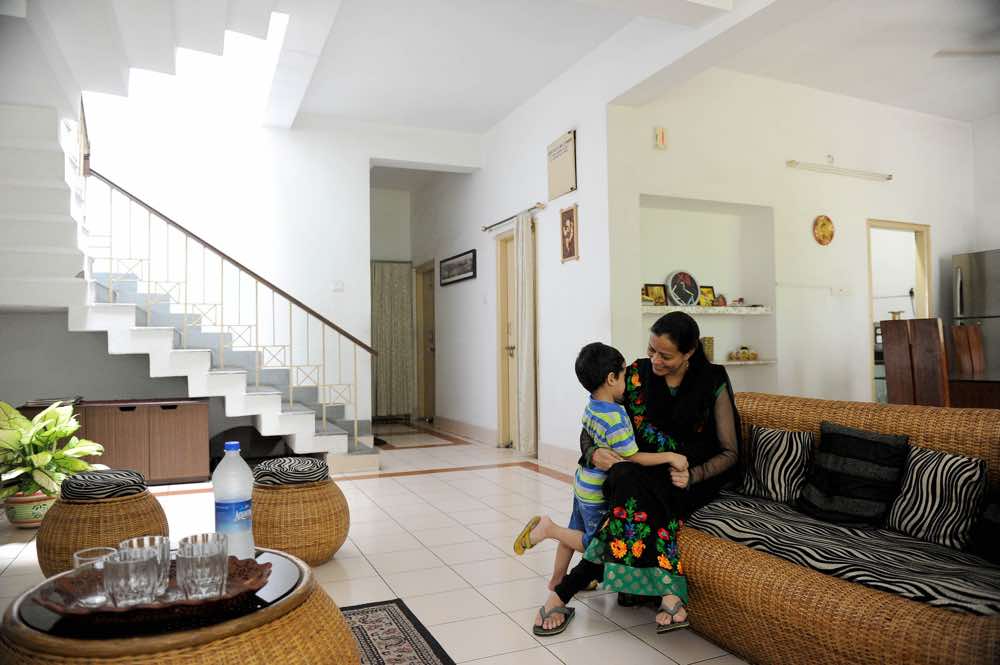
Siddhartha Misra's wife, Pooja Bajpai, and son, Devagya, sit in their home, which they rent from Tata Steel.
On his days off, Mr. Misra can be found practicing his swing at the 9-hole Beldih Club golf course or watching television and movies with his family. Jhalak Dikhhla Jaa, a dance reality show, is a favorite show on the weekends. His second child was delivered this summer at the centrally located Tata Main Hospital.
The housing is typically reserved for higher-ranking, older officers at Tata, but his experience at U.S. Steel allowed him secure better housing, he said.
“It was a little challenging to return to India,” he admitted. “I wanted to join an organization which treats its employees fair, has excellent work ethic and provides a technically stimulating environment and opportunities for growth. Tata Group is a brand in itself.”
Daniel Moore
@PGdanielmoore
dmoore@post-gazette.com, 412-263-2743
Design & Development Zack Tanner
Funded by a grant from the Pulitzer Center on Crisis Reporting, business reporter Daniel Moore and photographer Michael Henninger traveled to India for three weeks in August. In the World Power series, they document energy’s ties to rapid economic growth in India. They show how researchers in Pittsburgh are working with their Indian counterparts to advance clean sources of electric power in both rural villages in India and urban neighborhoods in the developed world.
WorldPower
Part 1
From Pittsburgh to India, racing to reinvent the electric grid